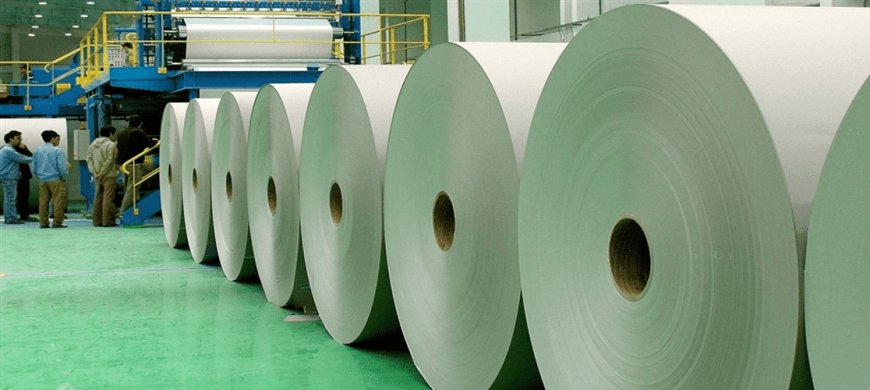The Future of Printing: Innovations in Hansol Thermal Paper Jumbo Rolls
Discover innovations in Hansol Thermal Paper Jumbo Rolls, enhancing efficiency, sustainability, and quality for high-volume printing.

In the rapidly evolving landscape of printing technology, businesses are constantly seeking ways to enhance efficiency, reduce costs, and improve sustainability. One area that has seen significant advancements is thermal printing, particularly with the use of Hansol Thermal Paper Jumbo Rolls. These innovations not only redefine the quality of printed materials but also transform operational processes across various industries. This article explores the future of printing and the key innovations associated with Hansol Thermal Paper Jumbo Rolls that are set to shape the industry.
Advancements in Thermal Paper Technology
Thermal printing has long been favored for its speed and ease of use, particularly in environments that require high-volume printing. Hansol Thermal Paper Jumbo Rolls are at the forefront of this technology, leveraging advancements that enhance their functionality. Recent innovations include the development of papers with improved thermal sensitivity, allowing for faster print speeds without compromising quality. This means that businesses can produce clear, crisp prints more efficiently, meeting the demands of high-volume environments such as retail and logistics.
Moreover, the introduction of multi-layer thermal paper has expanded the capabilities of Hansol’s products. These rolls incorporate a unique coating that enhances the image quality while providing better resistance to heat and moisture. As a result, prints remain legible and intact for extended periods, which is crucial for receipts, labels, and other printed materials that may be exposed to varying environmental conditions.
Eco-Friendly Solutions
Sustainability is becoming an increasingly important focus for businesses and consumers alike. Recognizing this trend, Hansol has embraced eco-friendly practices in the production of Hansol Thermal Paper Jumbo Rolls. Innovations in this area include the use of recycled materials and environmentally safe chemicals in the manufacturing process. By minimizing the environmental impact, Hansol not only meets regulatory requirements but also appeals to environmentally conscious customers.
Additionally, the company is exploring ways to enhance the recyclability of their thermal paper. This innovation not only contributes to a circular economy but also aligns with the growing demand for sustainable business practices. As businesses look to reduce their carbon footprints, using eco-friendly thermal paper can be a significant step in the right direction.
Enhanced Durability and Performance
Another innovation that sets Hansol Thermal Paper Jumbo Rolls apart is the focus on durability. Traditional thermal paper can suffer from fading and smudging over time, but advancements in coating technology have significantly improved the longevity of Hansol products. These innovations allow printed materials to resist wear and tear, maintaining their quality over longer periods.
For businesses that require long-lasting prints, such as medical facilities or warehouses, this increased durability is vital. Hansol’s thermal paper is engineered to withstand harsh conditions, ensuring that important documents and labels remain clear and legible. This reliability enhances operational efficiency and minimizes the risk of errors associated with misread or damaged prints.
Smart Printing Solutions
The future of printing is not just about the paper itself; it also involves the integration of smart technologies. Hansol Thermal Paper Jumbo Rolls are being developed to work seamlessly with advanced printing systems, including mobile and cloud-based applications. This innovation allows businesses to streamline their operations by enabling real-time printing capabilities from various devices.
Furthermore, Hansol is exploring the use of IoT (Internet of Things) technologies in thermal printing. Imagine a scenario where printers automatically reorder Hansol thermal paper when stock runs low, ensuring that businesses never experience downtime due to insufficient supplies. This integration of smart technology enhances workflow efficiency and helps businesses maintain productivity.
Cost Efficiency through Bulk Purchasing
One of the most practical innovations in the realm of Hansol Thermal Paper Jumbo Rolls is the cost efficiency associated with bulk purchasing. Businesses can benefit from significant savings by opting for jumbo rolls, which reduce the frequency of roll changes and minimize waste. This not only lowers operational costs but also streamlines the printing process.
Hansol’s commitment to providing competitive pricing for their jumbo rolls makes them an attractive option for businesses of all sizes. In a landscape where every penny counts, the cost savings achieved through bulk purchasing can be reinvested in other areas of the business, driving growth and innovation.
Conclusion
As we look to the future of printing, Hansol Thermal Paper Jumbo Rolls stand out as a beacon of innovation and quality. With advancements in thermal paper technology, eco-friendly practices, enhanced durability, smart printing solutions, and cost efficiency, Hansol is poised to lead the industry into a new era of printing excellence.
For businesses engaged in high-volume printing, embracing these innovations means not only improving operational efficiency but also positioning themselves as leaders in sustainability and technology. By choosing Hansol Thermal Paper Jumbo Rolls, companies can confidently navigate the future of printing, ensuring that they remain competitive in an ever-changing market.
In summary, the innovations in Hansol Thermal Paper Jumbo Rolls are not merely trends; they represent a fundamental shift in how businesses approach printing. As technology continues to evolve, Hansol’s commitment to quality and sustainability will play a pivotal role in shaping the future of the printing industry.

 kaylaphilip
kaylaphilip